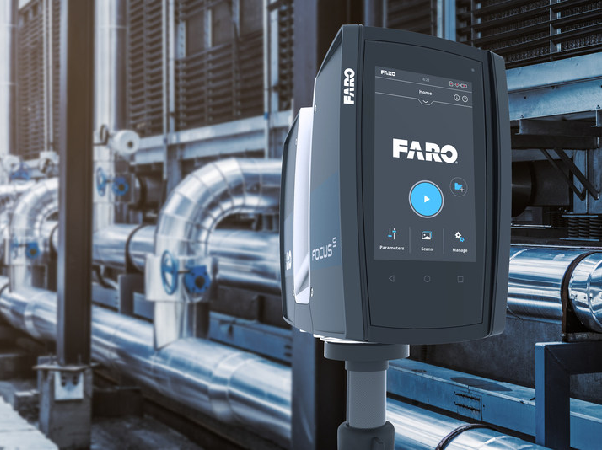Faro Focus laser scanner vs. Leica RTC 360
Today we would like to inform you in detail about our choice of the laser scanner Faro S350.
Until 2019, there was only one scanner manufacturer who was able to meet the high demand for millimeter-accurate scanning. It was the laser scanner Faro. Faro´s laser scanners have been unrivalled in the middle price range. It is always being said: „Competition stimulates business“. Therefore, everyone was looking forward to the new Leica´s scanner.
In 2019, Leica launched the RTC 360 and thus officially entered the market of the medium price segment.
We tested both scanners extensively for pure scanning functions, performance of the software and also for data quality.
Here we want to share our experiences with you:
Operability:
The UI (User Interface), looks quite good on both scanners and is easy to use with touch screen functions. Explained intuitively and understandably.
Speed:
Leica advertises widely with its scanner, which takes a maximum of 2 minutes per scan, including photos. With regard to the scanner Faro, a scan with photos in the same resolution takes about 3 minutes. Our conclusion:
During scanning, the time difference is not noticeable as the Leica RTC needs to start as well as to finish the scans longer and therefore it takes the same time period.
Settings of the scan resolution:
The resolution of the scans is about the point density which the scanner does at a certain distance (e.g. every 2 mm at 10 m).
Concerning the scanner Leica, we have exactly 3 possibilities (low, medium and high resolution).
With using the scanner Faro, there are much more setting options. We have the possibility to work in about 12 different resolutions and thus we are very flexible in terms of settings.
Tilt sensors of the scanners:
A very important aspect of scanning is the tilt sensor. Without this tilt sensor it is not possible to bring the single scans together into a point cloud project. Thus, you have always problems with the aimed accuracies and the reworking of the scans.
The Leica RTC has an IMU in it. This can align the scans very roughly, but unfortunately not sufficiently for the accuracies. It has definitely to be corrected.
The Focus has already integrated a two-axis compensator with high accuracy. Quite a clear plus point.
Software Scene (Faro) vs. Cyclone Register 360 (Leica):
User Interface Software. Both software programs have a simple structure and are coherent in themselves, so that even without intensive training the most important functions can be operated after a short time.
Regarding the processing software (registration software), the aim is to bring the individual scans together. In technical jargon it is called „registering“.
Here it is important with which resolution we have scanned and of course also which sensors are integrated. The inclination sensor plays a big role again.
Speed in processing and registration
During the registering and processing the scans, there is huge difference in speed.
Here, we worked with both scanners and software programs with 12 identical scans each. By means of medium resolution and colour information.
There I have to say clearly that Scene is far ahead concerning the speed. We needed 20 minutes for the import, the processing as well as for the registration. Concerning Cyclone Register we were finished in about one hour. There is still a big difference in the software.
The reason for this is that Scene is multi-core and thus also calculates several scans simultaneously. Export possibilities of the point cloud depending on the CAD system it is of course also important to know which export possibilities I have in a software. Both are well positioned. The common export formats like e57. xyz., las., dxf., pts. are available.
A plus point for Scene is that I can also directly output an rcp. as a point cloud. An rcp. is the common file format for the whole Autodesk world. AutoCAD, Inventor, Revit and Navisworks can be used with this format.
Data quality:
For data quality, we have compared the point cloud as well as the photos. Here the scans from Faro perform better overall in terms of quality.
The advantage of Cyclone is that I can adjust the contrast as I like.
Especially in the photo views of the scans and the parallax error (shifting of the point cloud to the photos) there is a noticeable difference. Again a point for Scene.
Regarding the point clouds, both scanners are on a good and identical level.
Here an exact point catch for Scene was more important for us. Scene scores with several selection functions in the dimensions of components or buildings.
Conclusion from us:
All in all, one has to say that there is a huge movement on the market at the moment and the topic is finally even more popular.
We have decided to continue working with Faro scanners, as the complete system of hard- and software convinced us.
As a service provider, we in particular have to offering a wide range of export formats. In addition to that, a decisive point for us was that the implementation as well as the processing of the scans are faster in the further processing.
To sum up, we always recommend that you have to take a look on the products yourself and get an idea of it.
Thanks for reading and if you have any questions or suggestions, please feel free to contact us at any time.

